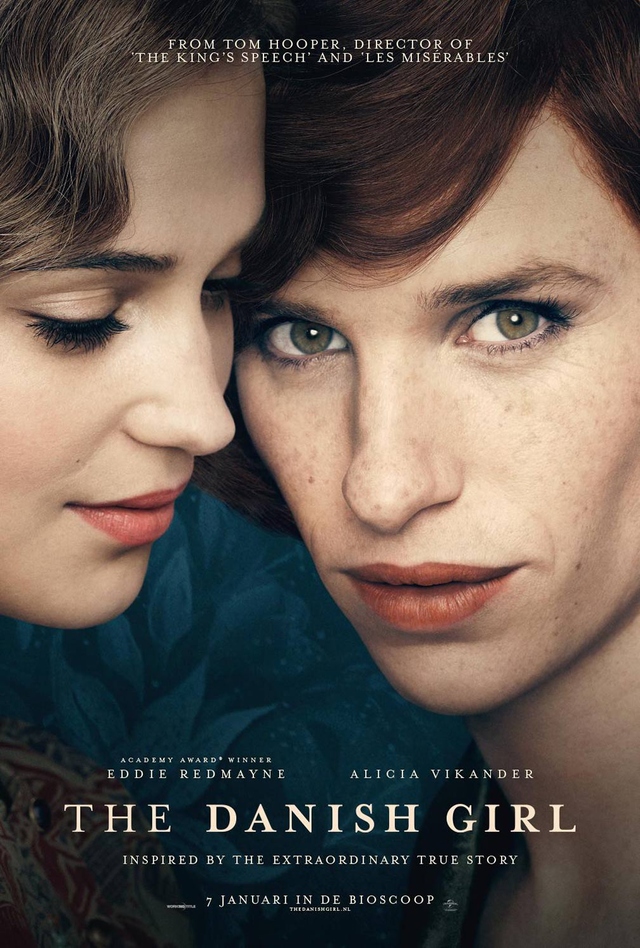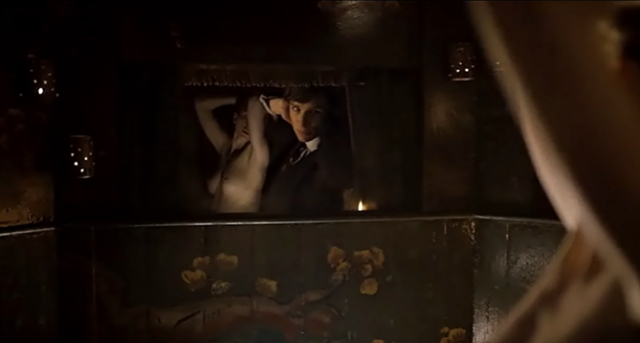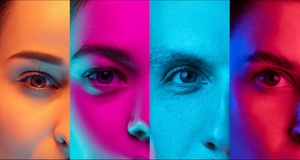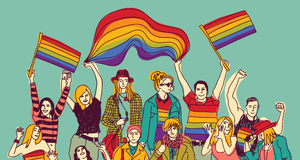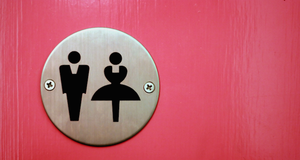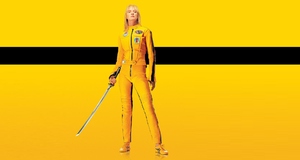The Danish Girl (2015) and the De/Construction of Gender Identity
By
2016, Vol. 8 No. 06 | pg. 1/2 | »
KEYWORDS:
By and large, today’s Western audience is unlikely to be roused by the story told in The Danish Girl (2015, directed by Tom Hooper), although it is based on true events. The artist Einar Wegener is in gender trouble:1 he was born in a male body, yet finds himself in the position of being unable to identify with it. He therefore embarks on the arduous journey of freeing himself from his bodily prison by eventually undergoing gender reassignment surgery in order to become Lili Elbe. Due to the unprecedented nature and the accompanying risks of the intervention, which is set in 1930s Copenhagen, Lili dies from the complications at the side of her ever loving wife Gerda. Lili, in short, is what we would nowadays call transgender. This, though, is only possible thanks to the efforts made by the feminist, queer, transgender and intersex movement over the last decades. With their help we are now able to theorise a way of being which probably has always existed. Before, however, Lili’s “ailment” was merely referred to as insanity, schizophrenia, homosexuality or indeed perversion, a condition which needed to be cured by imposing the most extreme measures, such as radiotherapy. The pathologization persists, albeit under a different name (Gender Identity Disorder) and with less immoral remedies being prescribed. In other words, gender identity still is, and is likely to remain for yet some time to come, a prevailing issue in today’s discourse, while scholars and activists alike persist in their endeavour to change society’s perception and rupture normative body regulations. To underline the essential role of the body as the platform and vehicle for gender performativity, the two sequences of film I analyse below do not contain any dialogue, thus allowing the (bodily) performances to speak for themselves. Working closely with Judith Butler’s ideas of gender performance and Jacques Lacan’s concept of the mirror stage, I focus on the evaluation of if and how, in its depiction of Einar, the film dismantles notions of a fixed, constructed identity. While the narrative content – the story of a transgender woman – might point towards a rather straightforward assessment of how gender might be(come) undone, my analysis illustrates how several filmic aspects achieve the opposite effect. Indeed, the cultural positioning of The Danish Girl as a mainstream film with Hollywoodesque overtones does a lot more in the way of reinforcing gender ideals. “The acts by which gender is constituted bear similarities to performative acts within theatrical contexts.“2 I begin my analysis with Butler’s parallel between gender and theatre performances as a guideline. Beginning from minute 37:25 and running through 40:00, the scene unfolds with the onset of orchestral music, emphasising the dramaturgy of the event as Einar takes refuge in the theatre. Albeit the fact that he finds himself in the offstage area, where only the costumes are kept, the staging of the first few seconds seem to communicate something different. There might not be a designated stage area or a curtain that needs to be drawn, yet the initial shot in the dark followed by the lights being switched on creates a similar effect. The room is not plunged into pitch-dark, which means the shapes that are already discernible create a certain sense of curiosity and suspense. Much like in theatre, we anticipate the performance and expect something meaningful to take place. Reminiscent of an actor standing behind the legs, Einar lingers at the door for one split second as if to take a deep breath before making his entrance from the side.3 He then enters what is effectively his own performative space above the main theatre stage. This impression is further underlined by the wide-angle shot of the elaborate installation of tutus, floating like clouds, which together with the high arched ceiling, the fresco and the neatly hung shirts appear to be a stage setting in their own right. It is not surprising, then, that the whole ensuing act is orchestrated very much like a theatrical performance: the well-known trope of the mirror, the meticulous attention to detail, the willed emotionality, the expressiveness, the narrative climax and the subsequent ebbing away. All these aspects put together endow the scene with such a distinct air of poetic artistry that, accordingly, the refuge takes on a second quality: safe space and performance space overlap. The theatre gives Einar the possibility to hide, but it also enables him to discover himself and perform Lili - in safety - on his own private stage. This means that Einar, by being in a theatrical context, could revert to the reassuring statement that “‘this is just an act’, and de-realize the act, make acting into something quite distinct from what is real.”4 This go-to reassurance is important as Einar, based on the filmic developments, knows without a doubt that he is a woman, but is not able to envisage quite yet all the ramifications of such knowledge. Viewed from a different angle, however, this also means that Einar might be able to de-realize what he considers an act - the act of performing as Einar – thus echoing his own words earlier on in the film: “I feel as I am performing myself.”5 Although these words are uttered in the context of accompanying his wife Gerda to the artist’s ball, these words bear a deeper meaning. Implied in those words is the notion that Einar is not merely putting on a mask in order to fit into such a context, but that his entire personality as Einar Wegener is an act. They speak to a disconnection between what he feels he is and who everyone else sees him to be. In that sense, the theatre space, in which he can openly and freely be whom he feels to be on the inside, paradoxically becomes the real world and the real world becomes the theatre in which he needs to perform his expected gender role.6 In saying that, I do not mean to imply that the theatre represents the “wardrobe of gender”7 where Einar can pick out a costume and enact his chosen role as Lili. Indeed, “the misapprehension about gender performativity is […] that gender is a construction that one puts on, as one puts on clothes in the morning.”8 Gender is not a free choice. It is to that effect that, being unable to circumvent the societal constraint to be either male or female, the theatre allows Einar at least some leeway in performing the gender he identifies with. So what exactly does Einar act out within the theatrical context? The first aspect to notice here is the importance of hands and tactile sensations. Indeed, I would go so far as to call them a leitmotif throughout the film. To Einar, hands and their movements seem to represent a prerequisite for womanhood. This means that in order to give an authentic rendition at the artist’s ball he practices by imitating a woman who indicates via her hand movement which fish she would like to purchase at the market. Or that right before the ball, in now clear anticipation of dressing as Lili, Einar repeats a similar exercise so as to remember how a woman posits her hand when seated.9 More importantly, though, hands embody a token of particular femininity to him, a way to feel his feminine side. As soon as he enters the theatre, he slides his hands over the different fabrics while striding through the long rails of costumes. Softly and gingerly, as if not wanting to startle them, Einar feels his way over the delicate cloths, which respond to his touch by emitting a faint but festive ting-a-ling. Pleasant anticipation and joyful intentness, underlined by Einar’s eager steps, linger in the air. Rather than reading Einar’s action as an allusion to drag, or fetish even, the focus on the sensorial seems to be a way of describing quite literally Einar’s getting in touch with his femininity. The feel of fabrics and items from which his male body has been banned allows Einar to bring out the woman he has so far repressed, but has always desired to be. This observation, then, goes hand in hand with his ensuing, almost violent, undressing. Einar’s male clothes, his hat, tie, braces, suit, and shirt, they all represent an obstruction. They are a hindering, restraining layer, put on under the societal constraint of conformity, which disguise his inner self and make his body unrecognisable to his own touch. As long as he feels the suit on his skin, he cannot fully feel Lili. How paramount touch really is for Einar in order to unfold Lili is shown by the camera’s zooming in on his hands while bringing everything else out of focus. This close-up shot, together with the now mellow music, give the whole sequence a sense of delicacy, fragility, purity even. We see the hands fold softly into one another, barely touching, yet shaped like a protective nest, cupping delicately around that which lies within. Following that, Einar’s subsequent tentative tactile exploration strongly reminds one of a small child who becomes aware of his own body for the first time. To this effect, Einar’s reflective self-discovery in front of the mirror echoes what Lacan terms the mirror stage of the infant’s development. According to this theory, the child recognises himself for the first time in the mirror, thus becoming aware of his unified and, more important, external body. Since this body, however, does not correspond to the infant’s otherwise still fragile state of being, the reflection in the mirror, or imago, is seen as the Ideal-I, while the pursuit of becoming said I will last his whole life time. Yet more important, Lacan states that “this form [the Ideal-I] situates the agency of the ego, before its social determination, in a fictional direction.”10 Therefore, the self that the child sees in the mirror is unattainable because it is merely a fantasy. What is more, once we enter into the symbolic order and start interacting with others, our self-image is henceforth established by the gaze of an external other. Einar, returning to the scene, looks at his reflection with a similar amazement as I imagine an infant might. He holds his head tilted to one side, the eyes are wide open and fixed intently on the object in the mirror, the gaze is half faltering and anguished, half curious and inquisitive, the lips are slightly apart, both in excited wonder and deliberate contemplation. It is as if he has never seen his own body before. And, indeed, he has not. Not the way it is now. What transpires here is a regression to the mirror stage, which enables him to undo the fiction implemented in his infant stage. That which I call fiction is the obtained belief that having a penis requires Einar to act in a specific way. For although the imago in the mirror back in his childhood might already have been Lili, Einar’s subsequent acquisition of language and other symbolic signs led him to perform according to the male gender ideal. His life was dedicated to both being (subject) and becoming Einar (Ideal-I). Now, the self-image has shifted. This change is first underlined by the camera’s moving away from his contemplative face looking at the mirror in order to focus on the body itself. His hand, with the camera steadily zoomed in, glides slowly and discreetly down towards his genital area and briefly remains there. This emphasises not only the slender and delicate fingers but, more importantly, the posture of the hand itself. The wrist is pushed upwards, the sinews are tightened and the fingers spread. In short, what we see is a perfect demonstration of gender performativity. By over-stylising the behaviour of Einar’s hands and shaping them into what I would call exaggeratedly feminine, they henceforth become the symbol of his transformation from male to female. This transformation is of course made explicit here when he tucks away his penis between his legs to hide that which visibly and tangibly bars him from his female identity. In doing so, Einar is able to mould his body to create the illusion of a vagina. Significantly, when we see Einar looking back up into the mirror a decisive change is recognisable, underpinning further the metamorphosis. The head is still tilted in meditation, but the one visible eye and mouth are now clearly smiling, while the twitching of the facial muscles bespeaks a suppressed grin. Indeed, the eye is noticeably welling up with tears of joy. Moreover, half of his face is now shrouded in greyness which serves to illustrate more than a mere split. On the contrary, the uncertain Einar from before has disappeared into mistiness and instead of Einar’s we now look into the bright eyes of Lili. The self-image, therefore, is now Lili. Regressing to the mirror stage gives Einar the agentive power to virtually create Lili, to shape and mould his body into Lili’s. By looking at his image in the mirror, Einar turns himself into an object; he becomes the object of his own external gaze. This act of looking consequently allows him not only to view his body from outside himself but to modify it. Accordingly, Einar modifies his objectified body in order to become the subject he wishes to be. He can, in other words, create a new self. “[…] “I” am in the process of becoming an other at the expense of my own death.”11 These words from Julia Kristeva’s work Power of Horrors meet Einar’s transformation head on. Einar can only become Lili if he is willing to let go of the former. The difference to his previous Ideal-I and the infantile mirror stage is that Einar, being an adult, has been part of the symbolic order for some time. Disregarding for a moment the influence these societal norms have had on Einar’s own mind, this means that any discrepancy between his new self-image and the other’s construction is temporarily suspended. The theatre space thus comes to function as a time bubble, allowing Einar and Lili to be; to be without constraint and imposition. Therefore, the self that emerges here, protected by the theatre walls, is not fantastical or mediated by society, language and discourse. It is real. This is illustrated symbolically by the binary opposition of two frames. First we see Einar fully dressed in suit and coat – tokens of what society has constructed as acceptable clothing for a man. Later, framed in the exact same way, we look at Lili completely naked, as if still untouched by society. This illusion is of course short-lived. Einar’s act is, in fact, simultaneously a disruption and continuation of the social reality we continually construct and are constructed by. He might challenge Lacan’s notion of the mirror stage in the sense that he sheds off his by society imparted ideal and forms a new one, but he does very much comply with Butler’s notion of gender performativity. For, although Einar might act out his perceived real self within the theatre walls, it is still very much an enacting of culturally defined femininity. The coy, blissful smile on his face and the tight, protective embrace of the dress, as a symbol of his new self, are but two examples of how femaleness is played out in the very last frame of the scene. Further, the emphasised utilisation of the sensorial comes to stand in as an archetype of feminine emotionality and sensuality. This assertion might be better explored still with the help of the second scene, beginning at 56:05 and running through 58:05, where Einar calls at a peepshow in a Parisian brothel. In many ways this sequence can be considered a repetition of the first one. On a mere narrative level Einar, again, flees from his now Parisian apartment in order to find solace elsewhere. The recurrence of the same musical motif here also underpins the notion of repetition. Rather than being redundant, though, the recurrence of an analogous scene creates a red thread which, allegorically speaking, echoes Butler’s notion of the repetitive nature of gender performance. Butler says in her essay on performative acts:
Following this quote, the filmic structure sets up a repetitive pattern which reinforces the idea of performativity, even before we look at the detailed content of the second scene. Einar repeats (his performance) as a way of being and becoming. Further, if gender and its expressive modes are engraved on us by means of societal inscriptions and conventions which are continually reproduced and performed over and over, then what happens here is precisely that: Einar engraves on his own body the gestures, modes, and movements of the female gender by way of repetition and mimicry. These preliminary observations together with Butler’s quotation might serve as an entrance into my close reading of the second scene. Back at the start of my analysis, I have stated that Einar enters a performative space. The theatre location might reflect this notion rather more obviously, yet the brothel, too, describes such a space. On a basic level this is illustrated by the noticeable similarity between the two in terms of set-up. Firstly, there is a curtain which, on entrance, hides from view the stage and its performer. The opening of the curtain, mirroring perfectly any play performed at the theatre, is the cue for the actress to start her show. Further, there is a clear separation between actress and spectator, only that the orchestra pit is substituted for a wall and window here. The true performative, or theatrical quality of the brothel, however, lies elsewhere. Much the same as in theatre, where the actors play a certain character, the individuals here are also given a role. Thus the roles are as follows: the customer who pays for the performance, the prostitute who performs, and, perhaps less important, the brothel keeper who handles the monetary transactions. This division of roles renders the brothel of particular interest in two ways. First because the roles are designated with iron rigidity, while any divergence from the norm, underlined by the brothel keeper’s grave face and curt attitude, is to be avoided. The rigidity of these roles is visibly demonstrated by the barriers – metal bars or glass window – placed between the three actors, thereby outlining the specific terrain of each one of them. And second because the performance of one’s role depends on a physical performance which is in itself highly gender performative: the prostitute plays out her feminine allure, while the customer acts out the to the male sex pertaining sexual instincts. The barriers notwithstanding, in fact it might be precisely because they are there, all three of the actors engage in a communal performance, following a tightly written script. This echoes Butler’s claim that “the act that one does, the act that one performs, is, in a sense, an act that has been going on before one arrived on the scene.”13 Even if Einar had never before entered a brothel, he would know how to act: he would only have to repeat what millions of men have done before him and what was encoded in his brain as a social convention. In that sense, the brothel in itself is very much a stylised repetition of gendered acts. This way of reading the stylised repetition, however, is disrupted by Einar’s non-compliance with his role of the male spectator. In fact, the brothel signifies something radically different to him. Much like before, he transforms the space into his own stage where he may discard his role of Einar and perform as Lili.14 Having previously created his new self, he is now able to perfect this new role by imitating the prostitute, who becomes the embodiment of ‘woman’ and ‘womanly movements’. For, although Einar’s external gaze still does create the prostitute, he does not look at her as an object of sexual desire. In that sense, he does not implement what Laura Mulvey has described as follows:
Instead, Einar sees the prostitute as a subject whose sexual expression he desires, whereby the creation of her serves as a basis for creating himself. In that sense, he does not see someone else doing a performance, but rather the prostitute’s performance functions like a reflection for his own identity. Her movements become his; it is as if he were looking into a mirror. To that effect, as soon as Einar opens the curtain, he starts mimicking the prostitute in an attempt to practice his own posture and to obtain a feel for his own body. This recalls the infant in front of the mirror. The synchronisation of both their movements soon takes away the impression of Einar copying her and replaces it with a mirroring effect. Although we see the prostitute’s body - the subject - in the foreground, it is out of focus and sits on the edge of the frame. The real focus is on the small window in which the prostitute becomes a mirrored image of herself – an object - while Einar remains the subject. Further, with his body seemingly at the front and hers slightly removed to the rear, we perceive the prostitute as his reflection now. This is further underlined by the contrast of her nudity and his being fully dressed. Since the whole symbolic of the peepshow is turned upside down by Einar’s refusal to implement his male gaze, the prostitute’s naked body is somehow perceived as what is underneath his suit rather than an external, objectified entity.Continued on Next Page » Suggested Reading from Inquiries Journal
Inquiries Journal provides undergraduate and graduate students around the world a platform for the wide dissemination of academic work over a range of core disciplines. Representing the work of students from hundreds of institutions around the globe, Inquiries Journal's large database of academic articles is completely free. Learn more | Blog | Submit Latest in Film & Media |

